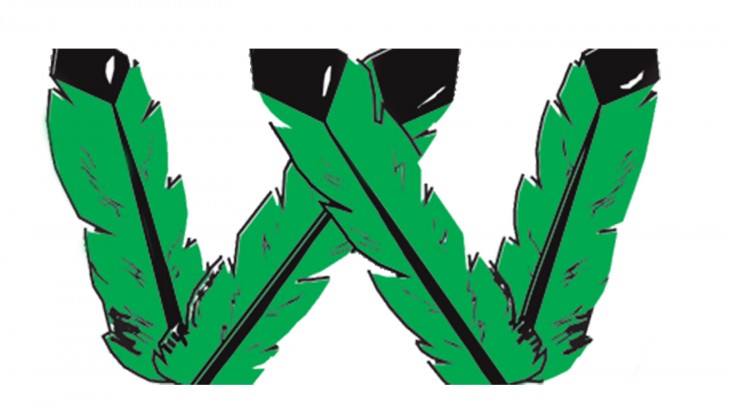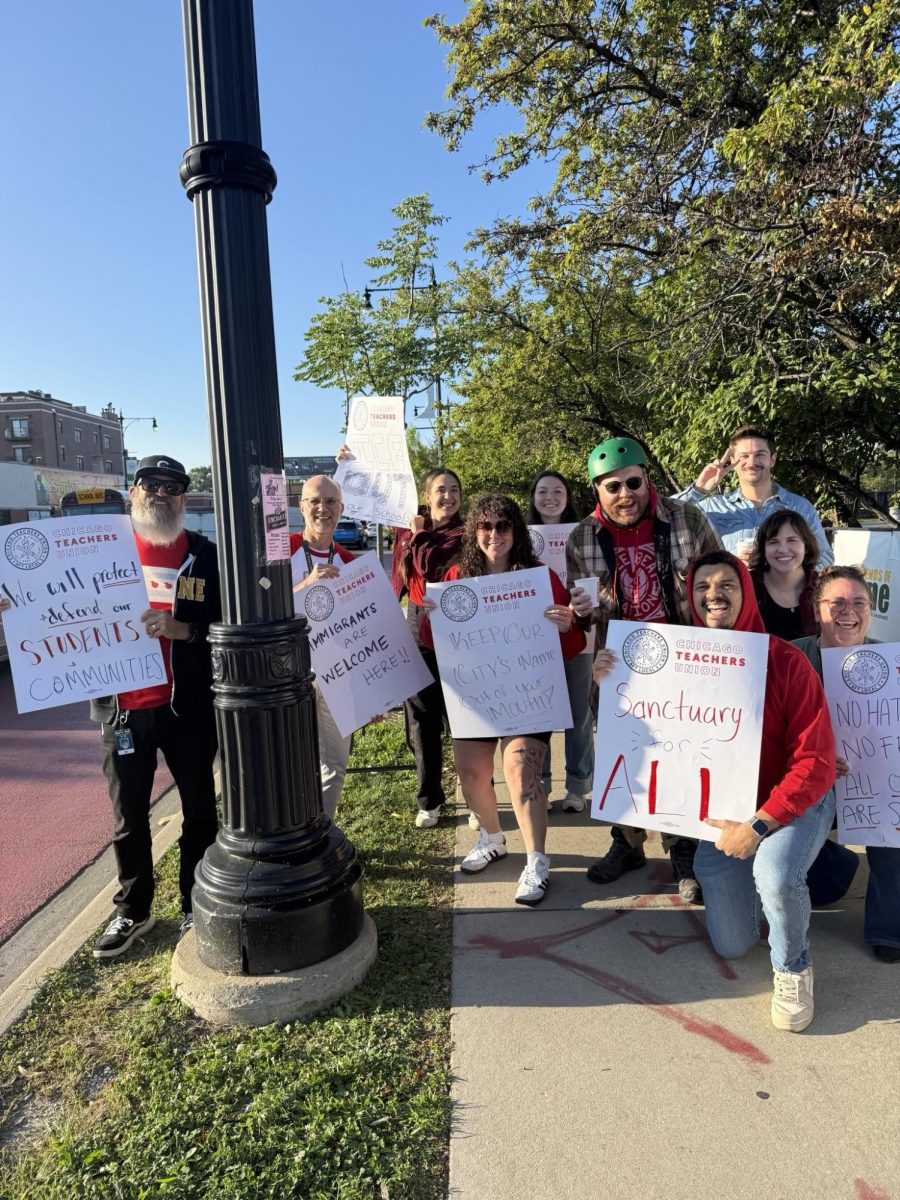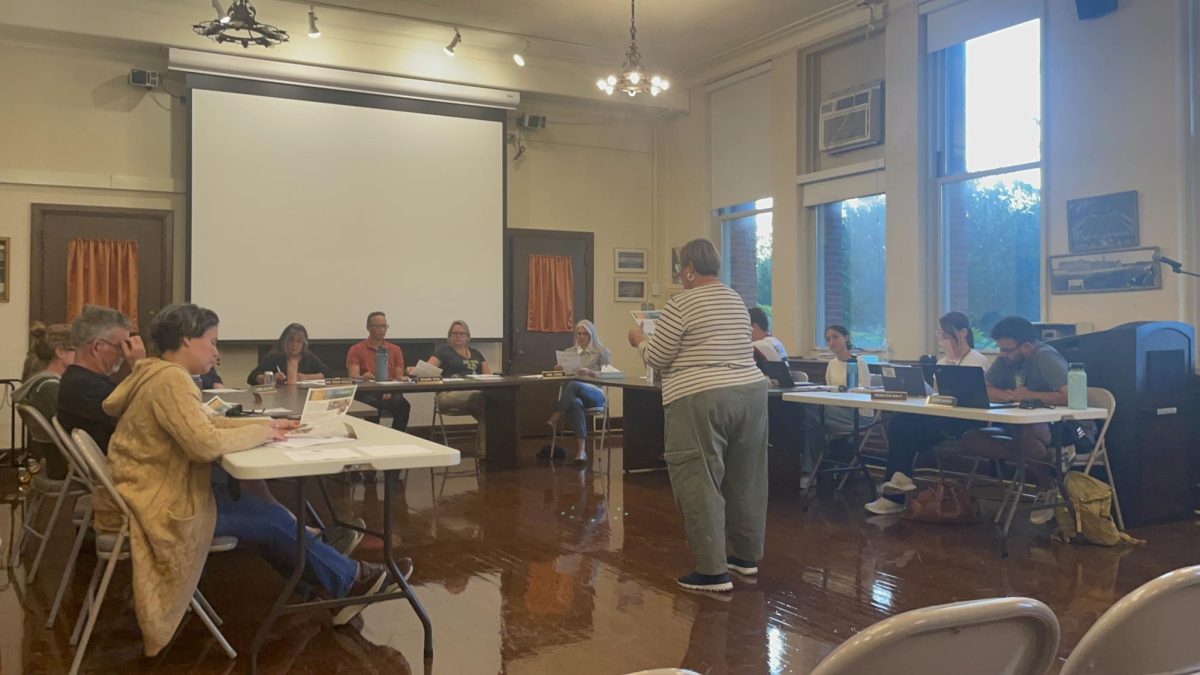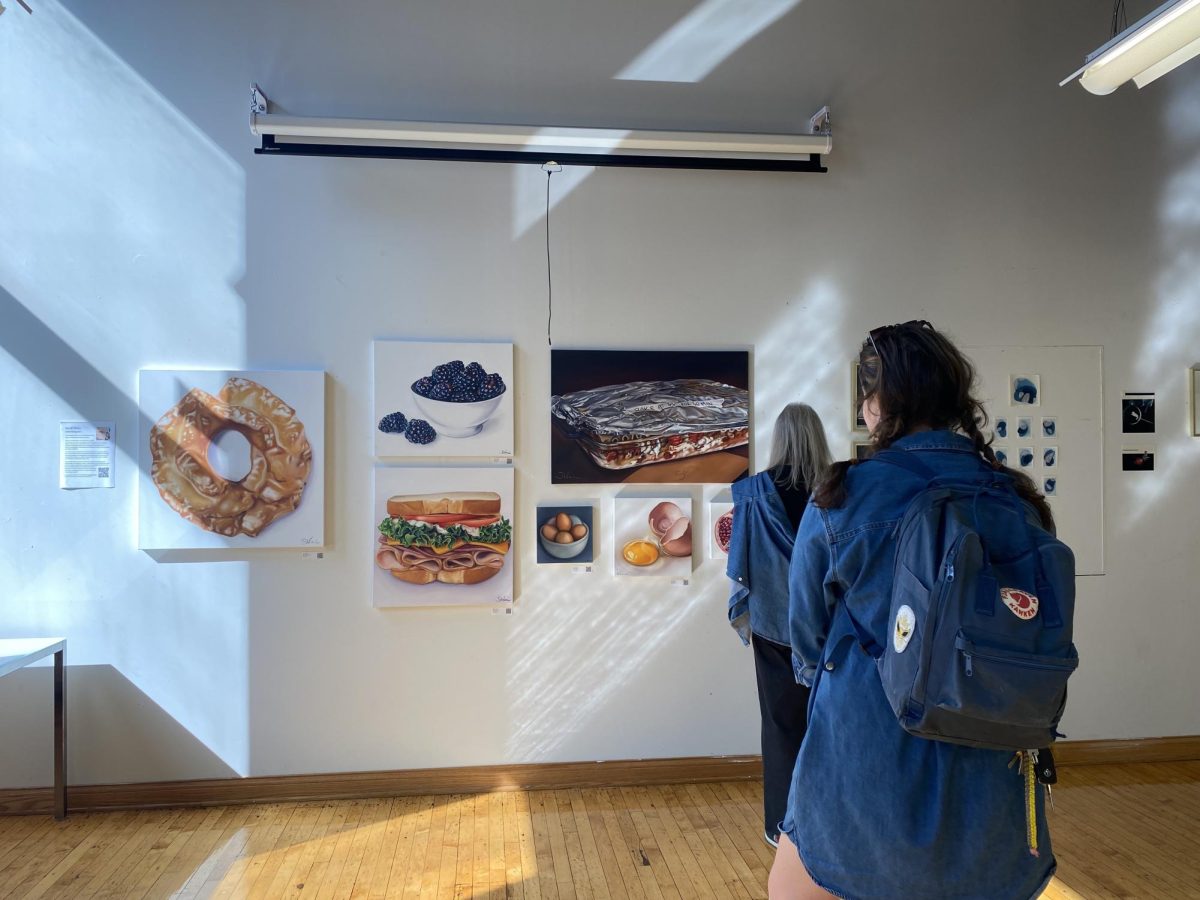By Anna Lagatutta
During lunch periods on Oct. 30, a line of eager voters snaked out of room 100, down the hallway, and turned the corner at staircase D.
Students were gathering to vote for the mock election, held by this year’s Political Science class. Voting was open to the whole school, and everybody was given the opportunity to vote on two opposing Constitutional Amendments: abolish the Electoral College, or eliminate the requirement for the President to be a natural born US citizen. The vote itself had a large turnout.
“[On voting day], it was hectic and full. I was seriously surprised that there was a line before it even [had been] set up,” said political science student Tristan Uddfolk, Div. 583.
In the end, the Amendment concerning the Electoral College was approved, while the other was turned down. Prior to the mock referendum, students held a small classroom debate, discussing issues on each side. From there they were assigned specific groups and sides to advertise for.
Students were encouraged to make flyers representing their team’s Amendment. The flyers covered Lane’s hallways for weeks, capturing the attention of potential voters with their bright colors and bold font. Printed with short messages such as “keep calm and vote for Amendment 1” or “do the right thing, vote for Amendment 2”. The flyers were designed to capture students’ attention, and encourage them to attend the vote.
“The group I was personally in was to vote yes for Amendment 1, so we tried to just get the word ‘yes’ associated with the election. [That way] people going to vote would remember our posters, and vote yes,” said Zac Prybyl, Div. 550.
The flyers ended up paying off. This year’s election gathered almost twice as many voters as 2012. On Oct. 30, room 100 was packed with interested students.
This October’s mock election was the first one based off of current Constitutional Amendments, and second one since 2001. Michael DeRoss, the Political Science teacher, has given his students the opportunity to hold mock elections for the past two years.
“The exercise was designed to test students’ ability to motivate voters, contact voters, and run a short, small campaign,” Mr. DeRoss said.
In addition to understanding how real elections work, students are starting to see how much work they take.
“It was a really great experience, and a fun way to show how stressful a real election could be,” Prybyl said.
This, however, is just the beginning for the Political Science class. Mr. DeRoss’s students look forward to preparing for a second, larger mock election during the third quarter of the school year.





